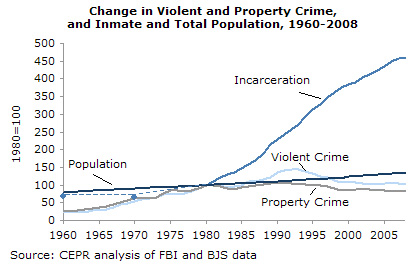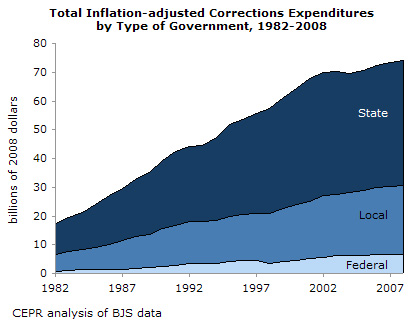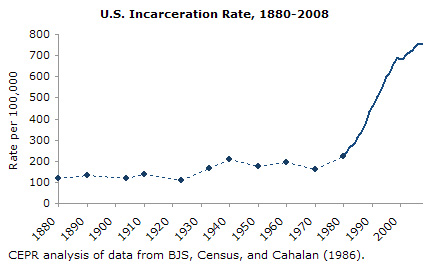 John Schmitt, Kris Warner, and Sarika Gupta write about
The High Budgetary Cost of Incarceration:
John Schmitt, Kris Warner, and Sarika Gupta write about
The High Budgetary Cost of Incarceration:
The United States currently incarcerates a higher share of its population than any other country in the world. We calculate that a reduction in incarceration rates just to the level we had in 1993 (which was already high by historical standards) would lower correctional expenditures by $16.9 billion per year, with the large majority of these savings accruing to financially squeezed state and local governments. As a group, state governments could save $7.6 billion, while local governments could save $7.2 billion.There’s a 19 page PDF report published by the Center for Economic and Policy Research, but that one graph pretty much spells it out: incarceration went up abruptly starting in the early 1980s and continued up, while crime did not. What we have here is a very expensive policy mistake.These cost savings could be realized through a reduction by one-half in the incarceration rate of exclusively non-violent offenders, who now make up over 60 percent of the prison and jail population.
A review of the extensive research on incarceration and crime suggests that these savings could be achieved without any appreciable deterioration in public safety.
And where does most of the cost come from?
State and local governments; the ones least able to afford it.
In case anybody thinks that it’s just some sort of pendulum swing that caused the U.S. to have more total prisoners than any country in the world, and more per capita, too, more than Russia, Rwanda, or Cuba, here are U.S. incarceration rates back to 1880:
This problem started in 1980, and is unlike anything before. Is it time to start fixing it yet?
Short Link:

